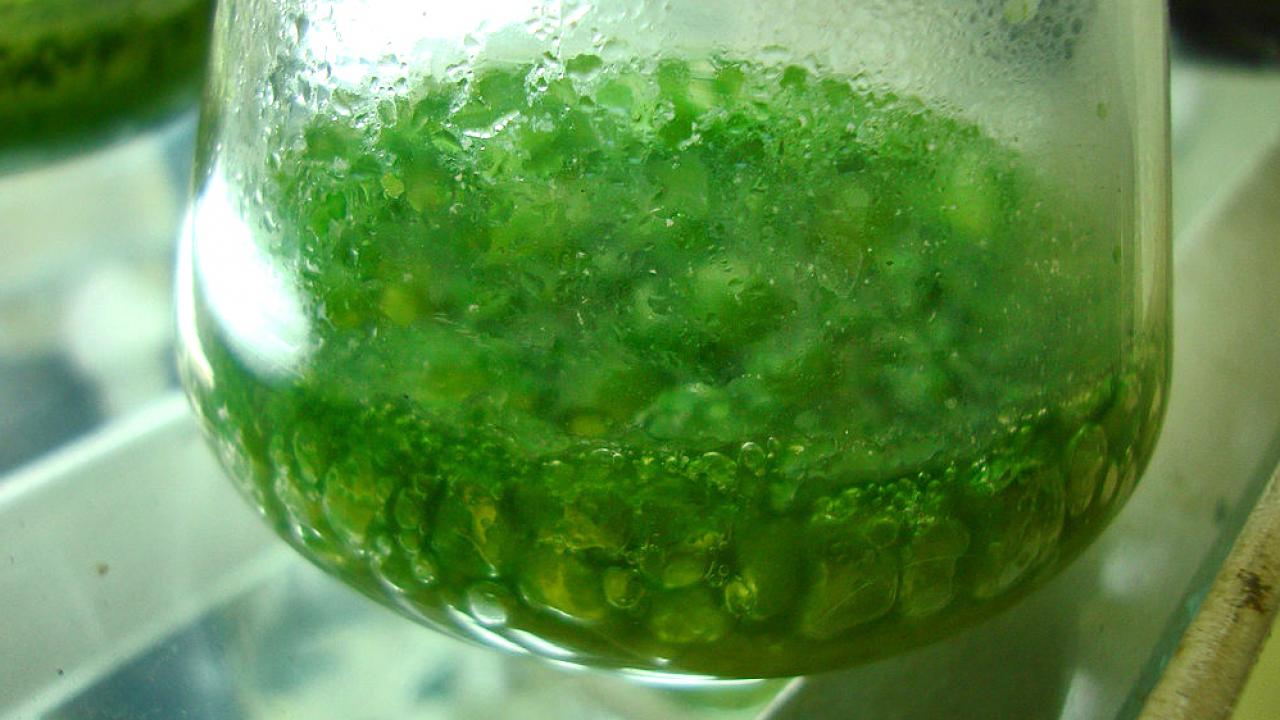
Photosynthesis Requires the Blue-Greens
How did plants develop photosynthesis? The story is really nothing more than a tale of biological thievery. More than a billion years ago, hungry, single-celled eukaryotes gobbled up photosynthetic cyanobacteria, integrating the bacteria’s light-feeding properties into their own biology.
That moment in evolutionary history is important to Distinguished Professor J. Clark Lagarias, Department of Molecular and Cellular Biology, and his colleagues in the College of Biological Sciences, as it marked the origin of chloroplasts, the cellular structures in plants responsible for photosynthesis.
As every high school biology student learns, photosynthesis is the conversion of light energy into chemical energy. The Lagarias Lab studies phytochromes, sensors outside of the chloroplasts which regulate the amount of light harvested for photosynthesis. These light sensors protect the chloroplasts from absorbing too much energy, which can kill the cell.
To understand how light harvesting is controlled in the alga Chlamydomonas reinhardtii, an aquatic relative of plants which lack phytochromes, Lagarias focused on the pigments responsible for the blue-green color of cyanobacteria, which enable phytochromes in plants to sense light.
Publishing in The Plant Cell, Lagarias and his colleagues found that a pigment called biliverdin is essential to light-induced chlorophyll production in the alga. This discovery is helping scientists understand why diverse algae retain these pigments, although many lack phytochromes.
Out of darkness
Unlike plants, green algae such as Chlamydomonas don’t solely rely on the sun for energy. They can feed like an animal and survive in darkness, as long as an organic food source of carbon is available. Even in darkness, green algae can synthesize some chlorophyll, the pigment all plants require to absorb energy from sunlight.
“Green algae are similar to plants in that when you put them in light, they green up. In this case, they get darker green,” said Lagarias, noting that the production of chlorophyll is aided by light.
In the study, Lagarias and his colleagues switched off the gene critical for producing biliverdin in Chlamydomonas. As expected, the mutant alga synthesized a small amount of chlorophyll in the dark, yet failed to produce chlorophyll when grown in the light.
“These organisms grew really poorly in light,” said Lagarias. “When you take this mutant and put it in the light, it just doesn’t green up.”
But when the researchers added biliverdin to the growth medium, the Chlamydomonas mutant shifted from pale yellow to a green hue.
According to Lagarias, this indicates that biliverdin is integral to light-induced chlorophyll biosynthesis in this alga and possibly in all other algae.
"Without biliverdin, algae cannot see the light to green," he said.
This research was supported with funding from the NIH, NSF, U.S. Department of Energy, National Natural Science Foundation of China, Junior Thousand Talents Program of China and Huazhong Agricultural University Scientific and Technological Self-Innovation Foundation.
